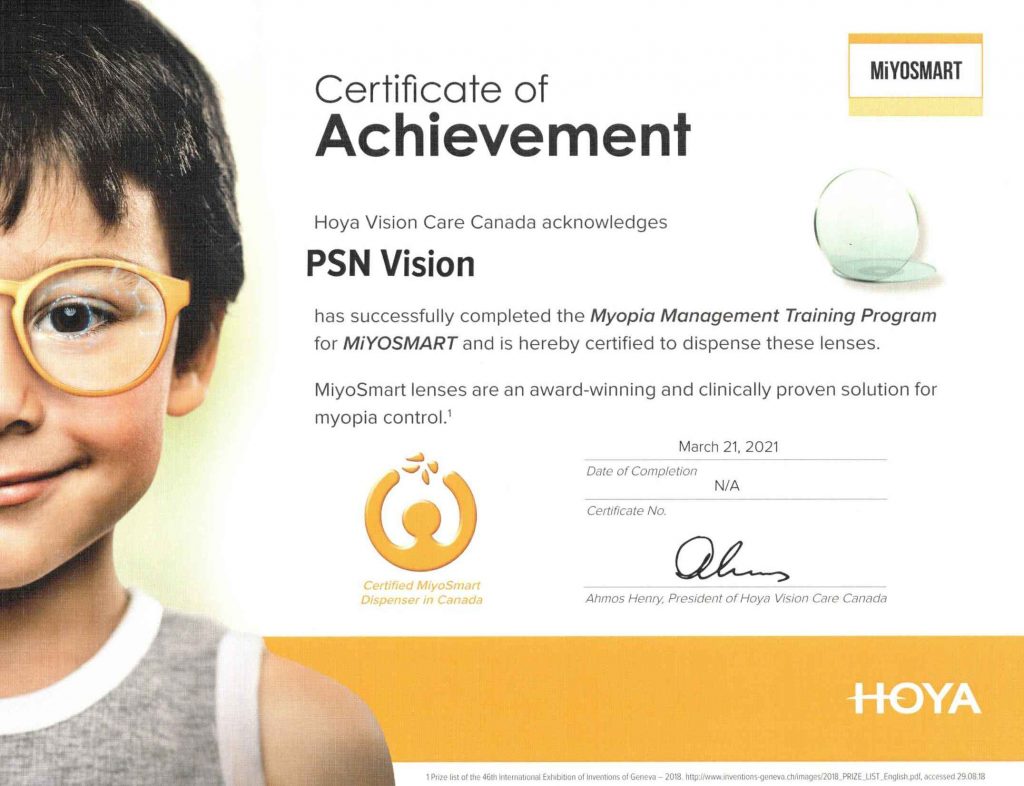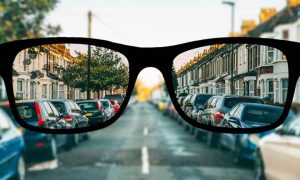What is it?
First, let’s get familiar with the terms.
Myopia is a vision condition more commonly known as nearsightedness. Someone who has myopia is said to be myopic, and similarly, someone who has nearsightedness is said to be nearsighted.
How does myopia affect vision?
Myopia causes vision to be blurry when looking out into the distance, but the vision up close remains clear.
Myopia can progress from being quite mild to extremely strong. As myopia progresses, the vision in the distance will worsen, and the furthest distance that one can still see clearly will get closer and closer to the eyes.
Who does myopia affect?
Myopia can affect anybody at any age, however, some groups of people are more likely to have it than others.
Infants & Toddlers (0 to 4 years old)
It is unusual for newborn infants and small toddlers to be myopic. However, for the few in this age group who develop myopia, it is extremely important to detect it early. Generally speaking, infants and toddlers are much more likely to be farsighted, the opposite of nearsighted.
School-aged children (4 to 19 years old)
This is the age group that is most likely to develop myopia. During these years, myopia can start suddenly and progress very quickly. That is why it is recommended that children in this age group get their eyes and vision tested yearly by an optometrist.
Adults (20 – 40 years old)
This age group is the least predictable.
Most people who are already myopic tend to stabilize during this period. However, there are certainly some people who will continue to see a slow progression all throughout their twenties and thirties.
While most people in this age group who are not already myopic will remain that way, there is a small chance that myopia can start during these years. When this happens, it is said to be adult-onset myopia.
Depending on the stability of the prescription, people in this age group should see an optometrist every 1-2 years.
Adults (40 – 65 years old)
In this group, myopia is generally stable, and it is not uncommon for myopia to actually improve slightly. Myopia never completely goes away on its own, but it is possible to see small improvements over many years.
People in this age range require an eye exam every 1-2 years. Despite myopia being generally stable, a condition called presbyopia is very active at this age and requires regular check-ups.
Seniors (65+ years old)
Unlike the progression of myopia in the early years of life, which is related to the growth of the eyes, progression of myopia in seniors can occur for a different reason. Cataracts, a common condition among seniors is known to cause myopia to worsen.
It is highly recommended that seniors be seen once a year (or more) by an optometrist.
What causes myopia?
Although there is no exact known cause for myopia, there are many known risk factors.
Genetics
Although myopia is not 100% genetic, children of myopic parents are more likely to develop myopia than children of non-myopic parents. It is thought that the susceptibility to myopia is genetic, not the myopia itself.
Visual Habits
There appears to be a strong link between looking at objects up close for long periods of time and the progression of myopia. Children who are avid readers, or spend a lot of time in front of close-up digital devices have a higher tendency to develop myopia. On the other hand, children who spend more time outdoors, tend to have lower rates of myopia.
How is myopia treated?
The most common treatment for myopia is glasses due to their universality. Glasses can be worn at any age and come in all shapes and styles. Soft contact lenses are a popular option for teens and adults who feel that glasses get in the way of their active lifestyles, or for those who just don’t like the look of glasses. Laser vision correction is an increasingly popular option for adults with stable myopia who don’t want to bother with glasses and contact lenses anymore.
Increasingly, treatment options are being developed to slow down the progression of myopia in children. These are called myopia control therapies, and they include:
- Speciality myopia control lenses for glasses (i.e., MiyoSmart by Hoya)
- Specialty myopia control soft contact lenses (i.e., Misight 1 Day by Coopervision)
- Wearing specialty hard contact lenses overnight (orthokeratology, or ortho-K)
- Daily medication eye drops (low dose atropine)
Some of these therapies can be applied concurrently. For more information about which would be best for your child, consult with an optometrist at the PSN Vision clinic.
Dr. Jason Woo


